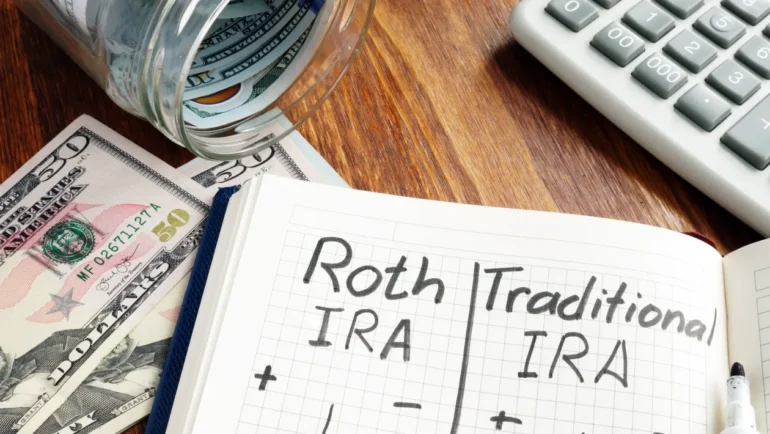You should put as much money into an individual retirement account (IRA) as the government will let you, but the exact amount you put away is up to you and relies on your financial strategy. This is due to the fact that the more money you save in accounts that delay taxes, the more money you will be able to earn tax-free in the future.
The maximum amount that you are permitted to contribute to an individual retirement account (IRA) in 2016 is $5,500 or the whole amount of your taxable salary, whichever is smaller. You may choose to contribute to either a regular or a Roth IRA. If you are less than 50 years old, the maximum amount of money you may contribute is restricted to this amount.
The Internal Revenue Service Has Imposed a Number of Limitations on Individuals and Businesses Based on Their Income

Your yearly income will determine how much of a contribution you are allowed to make to a Roth IRA. If you filed your taxes as a single individual in 2016, your modified gross income must be less than $117,000, and if you filed your taxes as a married couple in 2016, it must be less than $184,000.
If your annual income is much higher than those figures, you may be eligible to make lower contributions to the fund since your payments will be decreased. If this is the case, you will still be responsible for making payments.
When it comes to Roth IRAs, you have a little more leeway for flexibility than you do with traditional IRAs. Look into My Private Bullion for more information on these accounts. Reading the reviews of precious metals’ individual retirement accounts (IRAs) and how they have fared will provide you with a better understanding of the funds that have been providing continuous growth. If the scenario plays out as it has been stated, everyone, including you, will be subject to the same ten percent fine that was mentioned before.
The Internal Revenue Service (IRS) taxes withdrawals from a Roth IRA according to the following hierarchy: contributions, money converted from regular IRAs, and earnings. Because of this, if you withdraw more money than you have overall contributed, you will begin to utilize switchover money or profits, and as a consequence, you will be subject to financial penalties as well as taxes.
After converting your traditional IRA to a Roth IRA, you will be required to wait at least five years before you are able to withdraw the money from your account without being subject to taxes or penalties. The fact that each requirement includes a number of exemptions makes the problem much more complicated.
There Is No Assurance That Benefits Will Result From Quitting Before One Is Ready

If you are sixty years old or older, there should be no problems that develop. If you are younger than the age limit, you will be subject to a penalty if you take money from your conventional or Roth IRA before the allowed time. This is the case with each and every kind of financial account.
Nevertheless, there are a few situations in which you are permitted to take money out of an IRA without having to pay the additional 10% tax penalty.
Several examples of these are as follows:
- helping with the costs of higher education incurred by you, your spouse, your children, or your grandkids
- If you are 65 or older, it may be difficult to manage medical expenses if they consume more than 7.5% of your annual income. The under-65 demographic needs to reach 10%.
- covering the costs of the closing on your first home loan, up to a maximum of $10,000, or making your down payment.
- Having to foot the bill for an unexpected handicap.
If you “take back” another gift to a self-directed IRA (https://en.wikipedia.org/wiki/Self-directed_IRA) before the deadline for filing your taxes and do not subtract the percentage from your taxable income, you won’t have to pay taxes on the donation and may keep the money. Only if you submit your taxes before the deadline and don’t deduct any of your participation can you take advantage of this.

Within the first sixty days after converting money from a regular IRA to a Roth IRA, you have the opportunity to sidestep the 10% early withdrawal penalty. But if you did that, you wouldn’t be able to spend the money.
Are you really in such a precarious financial situation that you would do anything to have some cash in your hands? In the event that this is the circumstance, there is a method known as “basically equivalent recurring payments” that may be used in order to withdraw money from your typical individual retirement fund (IRA).
The process may be broken down into the following steps: The amount of money you will get annually from the IRS is determined by how long it is anticipated that you will continue to live. That is the very minimal minimum that has to be transferred out of the account on an annual basis in order to keep the account active.
Are you certain that this is the interpretation you wish to adopt? Choosing to proceed in this manner is by no stretch of the imagination a risk-free choice. It is not possible for you to stop receiving benefits until you are 59 and a half years old or until five years have elapsed, whichever occurs first.
As a direct result of this, there is zero possibility that you will alter your opinion about anything. If you make any changes to the amount, frequency, or timing of these withdrawals, you will be subject to a 10% penalty, which will be computed retrospectively from the day you first started receiving payments plus interest. This penalty will be charged.
Due to this particular factor, it is strongly advised that those who are younger than 50 years of age refrain from participating in the activity. Even if you are above the age of 50, you will eventually find that your savings for old age are being depleted. Because of this, you won’t be able to have a comfortable retirement.

